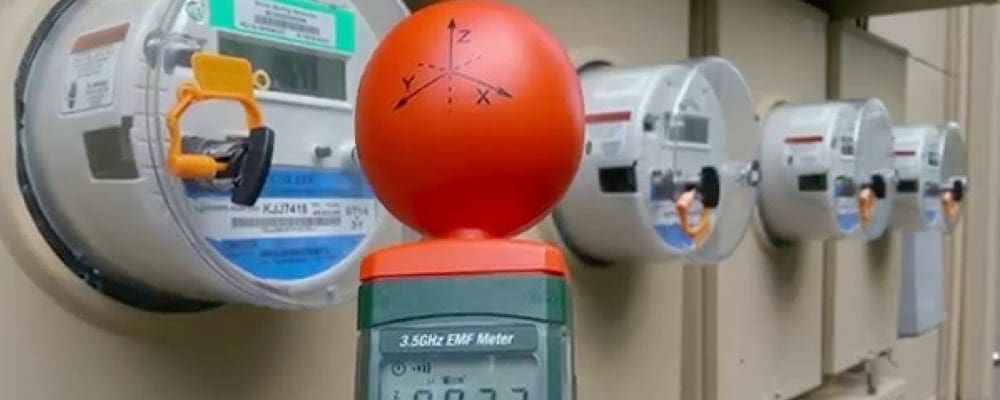With smart meters now installed in more than 75 percent of US homes and more being rolled out by the minute, concerns about smart meter radiation"Radiation" in the context of Electromagnetic Fields (EMF) refers to the process by which energy is emitted and transmitted through space or a material medium in the form of electromagnetic... are more relevant than ever. So just how safe are smart meters, and what might the dangers be from having a smart meter installed at your home?
Smart Meters: How They Work
A smart meter is an electronic device that digitally records your energy"Energy" is a fundamental concept in physics, often described as the ability to do work or cause change. In everyday terms, it's what is needed to move things, heat them... usage. It uses wireless communication (like cellular data networks) to transmit your usage data directly to your utility provider, eliminating the need for a manual reading using a meter reader.
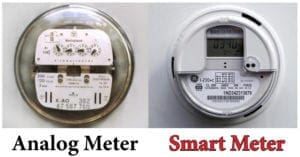
Utility companies claim that smart meters deliver benefits to consumers — like access to more data, better services, and cost and energy savings through data analysis.
And yet, reports from around the world repeatedly suggest that smart meters aren’t delivering on these promises, failing to make an impact on energy use in the US and beyond. For example, in the Netherlands, consumers are barely saving 1 percent on their energy bill — far under the projected amount.
Failing to deliver benefits is one thing — but smart meter radiation also comes with significant health and safety concerns.
Two Types of Smart Meters
Before we move further and understand the health risks associated with smart meters, let’s first look at the types of smart meters utility companies use.

Want to Slash Your EMF Health Risks?
Want to Slash Your EMF Health Risks?
Good! Learn the one small change you should make right now.
There are basically two types of smart meters. One uses pulsed electromagnetic fields to transfer data, and the other uses RF mesh as a transfer medium.
At their core, they both serve the same function. But the way in which they operate is completely different. It helps to know which one you have, so you can properly assess your risk and take necessary further actions. So, let’s have a look.
Pulsed Data Transfer
Traditional meters that were installed as soon as smart meters were announced transfer data using the pulsed EMF method. This means that your meter will keep recording your usage and periodically emit strong bursts of RF signals to transfer data from your meter to the company’s server.
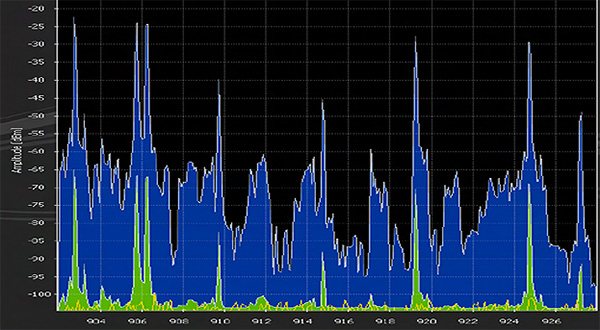
The official story told by many suppliers is that the meters only transmit data a few times per day. But both experts and consumer-run radiation tests have found that this is not the case. In fact, Senior Nuclear Policy Lecturer at UCSC, Daniel Hirsch, is reported to have found that smart meters “can emit intense pulses of radiation more than 14,000 times EACH DAY.”
The strength and frequency"Frequency" in the context of electricity, Electromagnetic Fields (EMF), and wireless communication, can be thought of as the number of times something happens in a second. Specifically, it refers to... of these radiation bursts make traditional smart meters particularly dangerous to human health.
Narrowband RF Mesh Network
Our current network infrastructure is super congested. And even though it has proven to work efficiently with our gadgets, it’s just not enough for something like a smart meter which requires high network reliability.
Companies knew that if they continued adding smart meters, it would cause a network overload and, sooner or later, even a complete collapse.
Their solution? Narrowband RF mesh technology.
How does it work?
You’re probably familiar with broadband. It’s a high-quality transmission technology that can transfer voice, video, and data faster than cellular networks.
Broadband operates using frequencies ranging from 800 MHz to 38 GHz. And I think you’d agree with me that it’s pretty good at connecting you to the internet.
But, when we’re talking about something like smart meters that need an extremely reliable connection, broadband isn’t a viable option.
Narrowband technology is similar to broadband. But, it uses unlicensed frequencies like 150-174 MHz or 421-470 MHz for connection. Right now, it’s less congested and doesn’t require much power"Power" in a scientific context refers to the rate at which work is done or energy is transferred. In simpler terms, it's how fast something is using energy. For example,..., so it’s perfect for smart meter data transmission.
But again, too many connections and narrowband will start experiencing the same problems as broadband.
So, what the companies did was that they adjoined narrowband technology with RF mesh technology.
RF Mesh
As the name suggests, RF mesh is a mesh of radiofrequency towers that can transfer data from one place to another efficiently without running into congestion.
To understand this better, imagine there are ten houses in a block, and all of them have a smart meter installed. If there’s only one network receiver to receive data from all ten smart meters, there’s a massive chance of network overload.
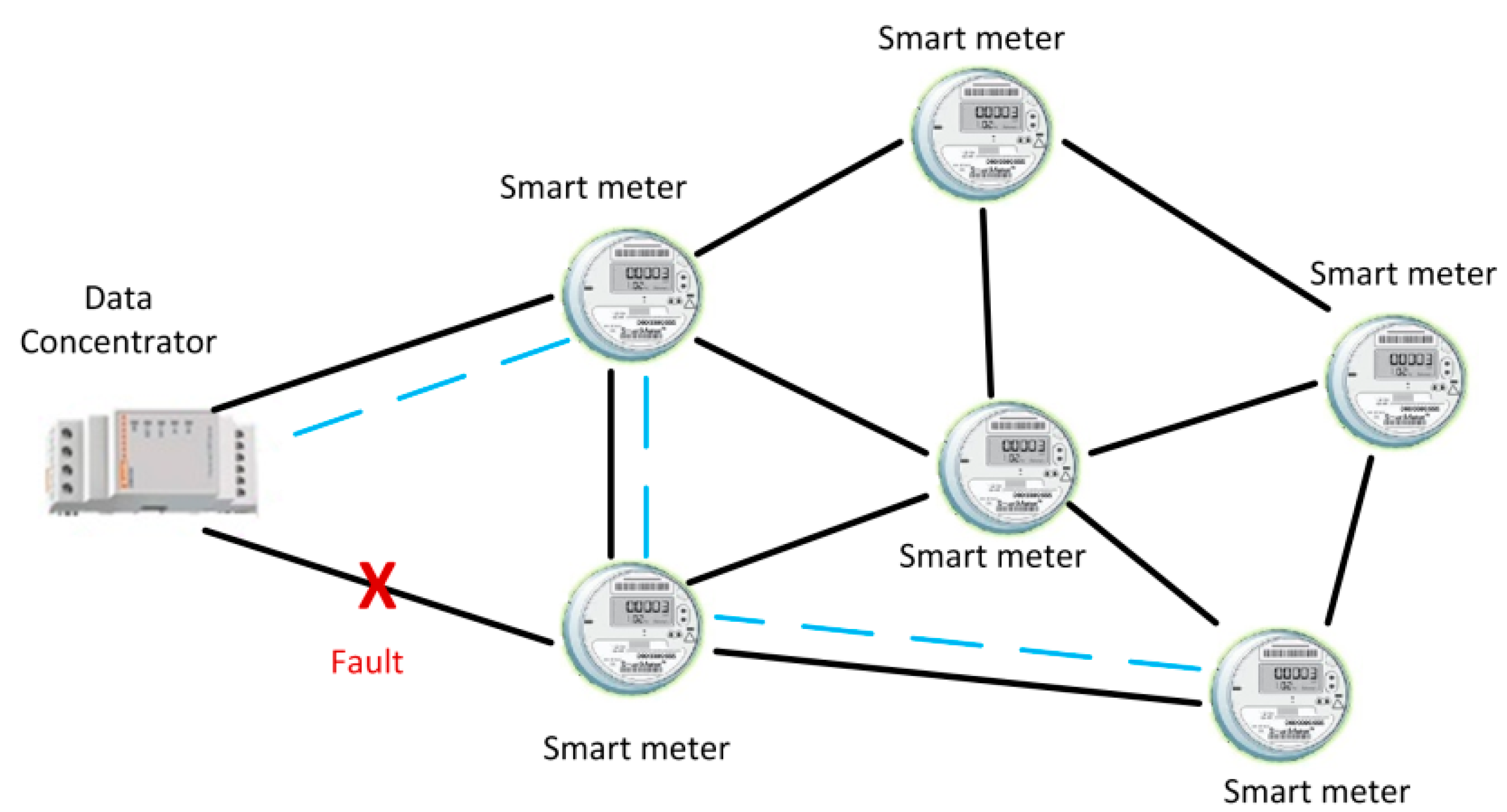
So, what RF mesh does is that it uses your smart meter as a network tower to exchange data. This means your neighbor’s smart meter will send its data to your smart meter and several more on the way to reach the server. And the same goes for your smart meter.
This amazing technology solves quite a few problems that we currently have with congestion and speed. But sadly, not without creating more.
The Problem
Even though standard smart meters reportedly emit pulsed EMF more than 14,000 times a day, they’re not as bad as smart meters in the narrowband mesh network. These new smart meters have to continuously emit EMF to keep up with the data transfer demands. This means you’ll be constantly exposed to EMF emissions, which can result in a range of health problems.
Read my “EMF Health Effects” page for more information on the health risks of prolonged EMF exposure.
So, how do you know which type of smart meter you have?
Find Out your Smart Meter Type
Right now, there’s no label or document you can read to know your smart meter’s type, as the regulatory bodies don’t require utility companies to disclose that information.
But there’s a way to find out the kind of smart meter you have installed in your home. And that’s through EMF testing.
It’s pretty simple. You just need a consumer-grade EMF meter, and you’re ready to get started.

Once you acquire your EMF meter, you can start monitoring the patterns of EMF emissions from your smart meter. If it has pulsed behavior — meaning, if it shows high signals intermittently — then you have a standard smart meter. If the signals remain constant for a long time, you have one in the mesh system.
But whatever the case, you’re being exposed to a massive amount of EMF radiation.
How massive?
Experts say that your smart meter exposes you to 160 times more EMF than your cell phone does.
EMF Emissions from a Smart Meter: Stronger Than Cell Phones
Cell phones emit a massive amount of EMF. And exposure to their emissions has been associated with health effects ranging from minor sleep disorders to chronic diseases like cancer.
Both the World Health Organization and the American Cancer Society officially recommend limiting cell phone use due to their radiation being “possibly carcinogenic to humans” based on scientific studies.
Since smart meters emit the same type of radiation, this makes the findings by UCSC’s Daniel Hirsch doubly disquieting.
Hirsch estimates that a single smart meter can produce 160 times more cumulative whole-body exposure to radiation than a mobile phone.
Hirsch’s calculations come from a detailed report in response to comments by the California Council on Science and Technology (CCST), who concluded that smart meters are safer than mobile phones. Hirsch points out that the CCST’s findings twisted the data by comparing different units in their calculations.
After Hirsch adjusted the calculations to correct the CCST’s errors, he found that “… the cumulative whole-body exposure from a Smart Meter at 3 feet appears to be approximately two orders of magnitude higher than that of a cell phone, rather than two orders of magnitude lower.”
Hirsch’s corrected calculations pit smart meter radiation well above the levels emitted by cell phones, WiFi routers, and microwave ovens.
Why Smart Meters Are a Health Risk
Many people have found the effects of smart meters to be both crippling and immediate. Within months of a 2010 smart meter roll-out in California, for example, over 2,000 health complaints were filed.
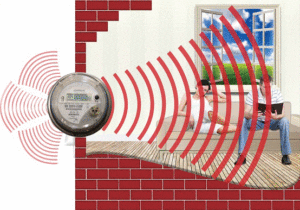
Customers reported symptoms including severe headaches, nausea, dizziness, tachycardia, insomnia, and tinnitus.
One expert even did a home experiment demonstrating the effect of smart meter radiation on the human heart. Here’s the full video:
At this moment, we lack data on the long-term effects of smart meter radiation. And with a large body of scientific evidence already attesting to the harmful effects of EMF on human cells, the true impact of constant, 24/7 smart meter radiation will only become apparent in time.
No Choice for Consumers
As we’ve already noted, smart meters profit the energy company — not the consumer. And in many places, consumers are not given a choice, forced by suppliers to upgrade to a smart meter even against their wishes.
In other areas, consumers are given a choice to opt-out, but at a cost. Maryland company Pepco, for example, currently charges a $75 one-off fee plus $14 per month to anyone who chooses to opt-out — and threatens to cut off electricity to anyone who refuses to pay up.
With the US smart meter market projected to be worth more than USD 1 billion by 2024, it’s little surprise that electricity providers are putting profits above the health of their customers.
Protecting Yourself and Your Family from Smart Meter Radiation
Smart meters present a unique problem. Unlike cell phones and other devices — which you use by choice and can opt to switch off at any time — smart meters are likely to be present whether you want them or not.
That makes protective measures more difficult—but not impossible.
Here are some things you can do to protect yourself and your loved ones from the ill effects of EMF exposure from your smart meter.
Add Some Distance
When it comes to mitigating your EMF exposure, distance is your friend. This is because, according to the inverse square law of physics, the power of EMF weakens exponentially with distance.
EMF is an energy, which means, like every other form of energy out there, it’s strongest at its source. To understand this better, you can think of EMF sources like a fire pit. The closer you move towards it, the hotter it gets, and vice versa.
So, when you add distance between your body and the EMF source, the amount of EMF your body has to face is relatively low. That’s also one of the reasons we recommend keeping your WiFi router at least 5 meters away from the place you spend the most time.
But the truth is, unlike other devices, moving a smart meter is out of the equation. So, what I suggest you do is to rearrange your home setup, so the places where you spend the most time are far away from the smart meter.
You can start with your bedroom. If your bed is near the smart meter, just move it to a different room. And if that’s not an option, you can simply slide it to a different part of the same bedroom. Remember, every inch matters.
SYB Flex Shields
Adding distance between your body and the EMF source works great. But you’ll still be exposed to weaker energy which, accumulated over time, can cause problems. This is where you can use our SYB Flex Shields as an added layer of protection.
SYB Flex Shields are a powerful EMF shieldingEMF shielding refers to the practice of reducing the electromagnetic field (EMF) exposure in a particular area by blocking or altering the electromagnetic waves with barriers made of conductive or... product made from a conductive, non-woven fabric composed of silver, nickel, silicon, and copper.

This product blocks and deflects up to 95% of the EMF radiation coming towards your body without interfering with your devices’ functionality.
You can simply peel and stick the SYB Flex Shield on a wall directly opposite your smart meter, and it will start working immediately.
SYB Poster Frame Liner
The SYB Poster Frame Liner (PF Liner) works just like the SYB Flex Shield. The only difference is that the PF liner doesn’t have a layer of pre-added adhesive.
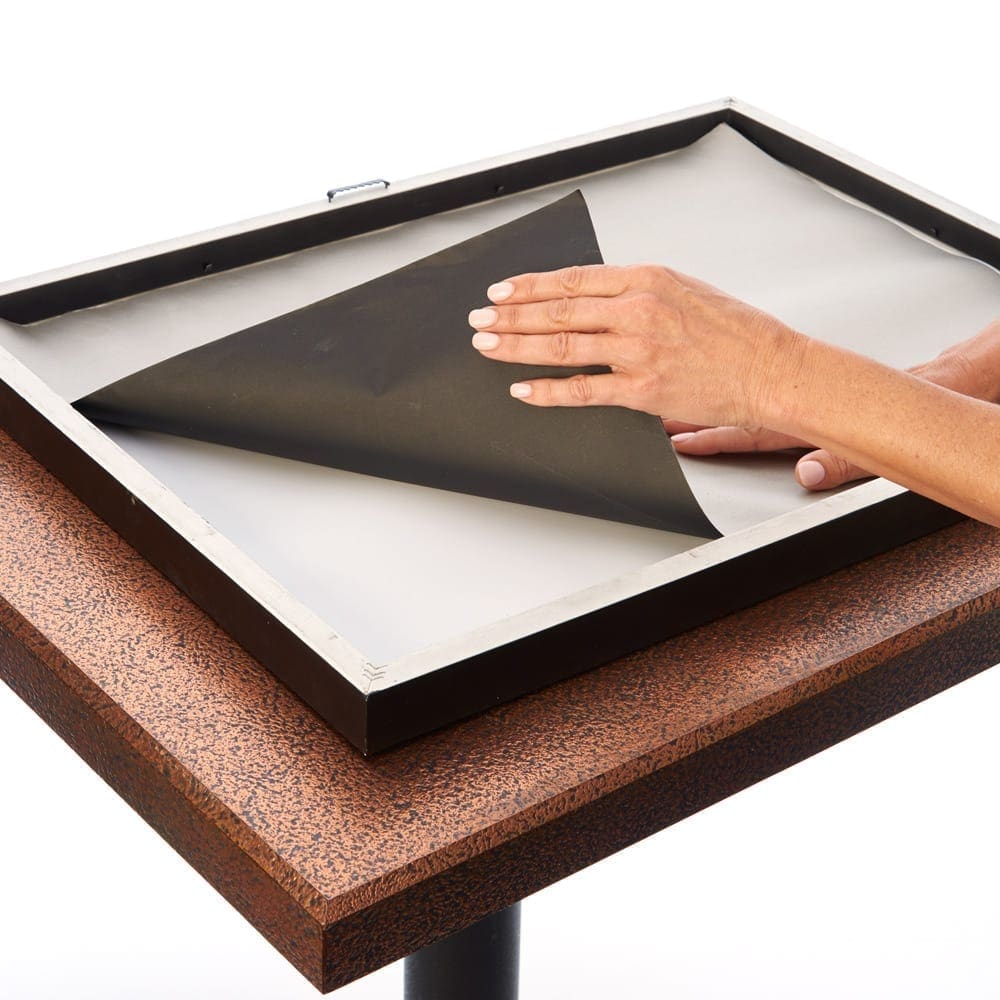
You can simply put the PF Liner behind a poster, print, photo, or painting and hang it on the wall directly opposite the smart meter. As soon as you do this, it will start blocking and deflecting EMF from your smart meter in the opposite direction.
Do Smart Meter Guards Work?
There are a lot of smart meter guards/covers in the market claiming to protect you from your smart meter’s EMF emissions. But do they actually work?
First, since it’s a smart meter, we can’t try and block 100% of its EMF emissions, as doing so will mess with its functionality.
So, another solution is to block its EMF from entering your home from the back. But electrical utility boxes are already made of grounded metal. And the majority of the RF emissions can’t penetrate grounded metal.
But radio frequencyRadio Frequency (or RF), a subset of EMF, encompasses electromagnetic wave frequencies ranging from about 3 kilohertz (kHz) to 300 gigahertz (GHz). These frequencies are extensively used in modern wireless... EMF (RF) isn’t directional; it propagates radially in all directions. So, the EMF coming out of the glass portion can make its way to the back towards your room.
This is why we recommend installing a painting or a frame with the SYB Poster Frame Liner on the wall directly opposite the meter. Or you can use the SYB Flex Shield as well.
So, coming back to smart meter guards, if you search on the internet, you’ll find many products designed especially for this purpose. But I can’t confidently say whether they work as I haven’t tried them for myself.
This is why I’m leaving the decision up to you. Just bear in mind that you can’t block your smart meter from emitting EMF altogether. And you can’t have a large gap on the shielding, either. Because one will make your smart meter useless, and the other will make your product useless.
So, I recommend finding a manufacturer who understands this and has a product that works with this balance.
If you need pointers on what questions to ask them, you can check out my post, “Deciphering EMF Protection Product Claims.”
Build Your Body’s Resilience
Even though evolution hasn’t designed our bodies to face the level of EMF radiation we’re facing today, an adult human is resilient to EMF’s effects to some degree. And you can enhance that resilience with proper nutrition and regular exercise, says building biologist and EMF expert Cathy Cooke.
The World Health Organization recommends for every adult aged 18–64 to perform at least 150 minutes of moderate-intensity physical activity throughout the week.
As for the nutritional aspect, I recommend reading Cathy’s post on “Foods & Supplements That Protect Against EMF Exposure.”
Before closing this post, let me also clarify that these tips are not alternatives to each other. You can choose between the SYB Flex Shield and SYB Poster Frame Liner, but as for the rest, I recommend following all these tips to ensure maximum protection from your smart meter’s EMF emissions.
Final Thoughts
Smart meters are here. And we have to accept the fact that they aren’t going anywhere. So, instead of pushing fruitlessly to eliminate them, the better way to approach the problem is to learn how to build a healthier relationship with them and technology in general.
This also happens to be the primary focus of our new show, “The Healthier Tech Podcast,” where experts from the EMF and medical industry share tips on living safer, healthier lives alongside technology.
We’re available on all major platforms, and you can tune in today for free. So, see you there.
